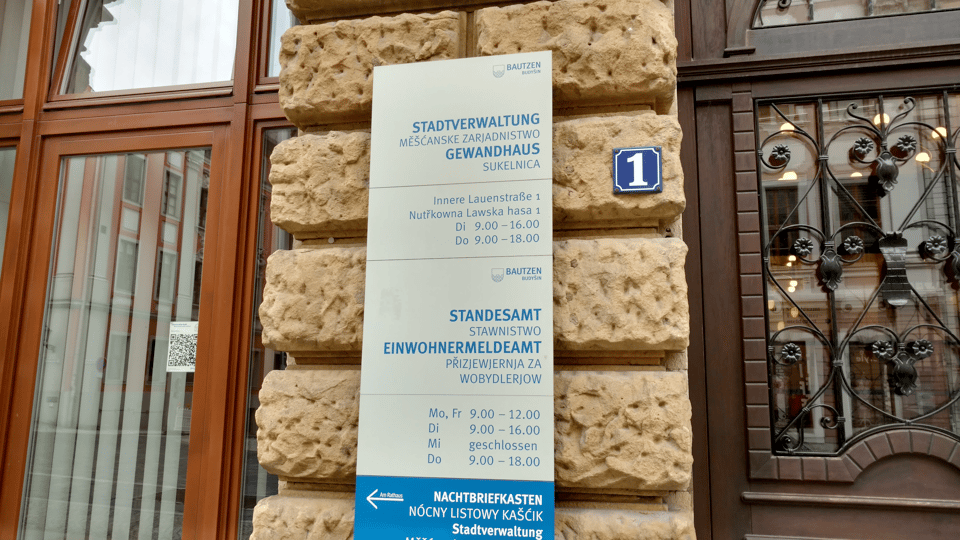Creator Day on itch; linguistic landscapes
Hello!
Itch.io Creator Day
Today (November 28), itch is not taking their cut from sales, so if you want to pick up a(nother) copy of Filling Your Worlds or a short story I wrote and have more of your money come to me than usual, head over to https://cdcovington.itch.io/ today. It’s DRM free, so you can gift it to a friend 🙂
The contract for the previously mentioned project is almost ready, so hopefully I’ll have a proper update on that next month! And hopefully next month’s newsletter will be out before Christmas…
Linguistic landscape
What is a linguistic landscape?
Officially, it refers to the languages seen on signs in an area (Wikipedia), and the field of study is new enough that there’s not really a unified theoretical perspective. People are still discussing what types of signs “count” as part of the landscape. Do hand-written signs count, or only officially printed ones? What do different alphabets or scripts signify?
The languages on the signs show which languages are relevant for the area. What languages are spoken besides the regionally dominant one? Do the people making the signs include the non-dominant languages? (I say non-dominant because in some areas, the “minority” language is spoken by a majority of people.) What does this tell us about the social and political environment in the area?

There are a lot of examples on the Wikipedia page, so go check them out.
I decided last week that I wanted to write about linguistic landscapes, so I paid attention to mine as an experiment. But I included languages I heard being spoken in addition to ones written down, but that only adds a couple languages to the mix. I’ve put some pictures of signs and wild signage into this google slideshow. I will possibly be adding more.
I live in a very unfashionable outer district of Berlin, where the population is generally less well-off. There are a lot of Germans, obviously, but there are also Ukrainians and Arabs (based on recent history, probably Syrian) and Vietnamese people. I hear a lot of languages other than German being spoken, but they aren’t generally represented in signage.
At my gym, in addition to German (and the Berlin dialect), I often hear Arabic and Vietnamese being spoken. The weight machines have the instructions in German, and on one of them you can see the English version through the German-language sticker. But the names of various exercises are in English (or Denglish), like “Lat press.” The stationary bikes are entirely in German.
On public transit, the signs and overhead announcements are in German and English. Berlin gets a lot of tourists, and, for better or for worse, English is the international language in Europe. Though if you get far enough out of the city, the English announcements vanish.
In Kreuzberg, which historically has a high concentration of people of Turkish origin, you get some signs in Turkish as well.
I debated whether to include imported grocery items, and I came down on the side of yes. Because of the demographic makeup of my neighborhood, there are cans and jars of Polish foods (I saw ham today). The label on the jar of tahini I bought says sesame paste, sesam pasta, pâte de sesame, tahin, Sesampaste on the front and has the ingredients in German, Turkish, English, French, and Dutch. The company appears to be Turkish.

I got a new winter coat from the big sporting goods store (a French company), and the tag is in at least a dozen languages, because they sell in all of them, and it’s easier to just whack a 6-page tag in than to use different ones for every country.
My hand lotion, from Cerave, is in German and French, but my lip balm (La Roche-Posay) is in French and English on the front, but French, English, Spanish, Portuguese, Italian, German, and Dutch on the back. (I have sensitive skin and a perfume allergy. I have a limited and expensive selection of brands to choose from.) My tin of Ricola is only in German.
Application to writing
The worlds you build will have more depth if you put in that, for example, the advertisements are in two different languages, or that the magic universal translation glasses render it automatically into the character’s language. You can show that a polity has a monolingual ideology and only publishes signs in their language. Maybe businesses or individuals put up signs in additional languages; maybe they don’t. Maybe that’s illegal and doing so would mean consequences. You can also show that a polity has a multilingual ideology and publishes signs in multiple languages.
How do your characters react to the signs? If it’s in their language, are they pleased? How do they feel if they can’t read the sign? There are a lot of ways you can go with this.
What’s in your linguistic landscape?
Have you ever paid attention to it? Maybe do an experiment yourself and see what you notice. Do it for a day or a week; see if it’s different when you go somewhere else (vacation, visiting friends or family). If you live in a culturally diverse area, do the signs match the variety of languages spoken there?
Until next time!


Add a comment